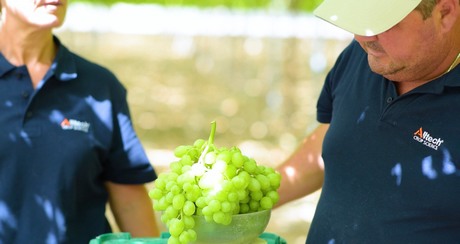Esca, one of the biggest threats to global grape production, is a complex disease involving various fungi. The disease attacks the plant’s main vine and can destroy it within a few days; there is no questioning the unstoppable pace at which esca progresses.
A previous article explored the history and economic impact of esca, and in this article, we will delve into what we know about its biology.
Esca sensu stricto was the name given to white rot in the trunk of mature plants; the accompanying symptoms that manifest in leaves, on the other hand, are the result of extensive colonisation of the trunk by pathogenic fungi, not the white rotting fungi.
According to recent studies, three primary fungi are involved with esca:
Phaeoacremonium aleophilum is considered a pioneer of the esca complex pathosystem, infecting the plant through pruning wounds (but not through pruning tools). The inoculum is actually a perithecium — a fruiting structure of some fungi — located in the crevices of vines, which spreads after rain, most often in the summer.
Phaeomoniella chlamydospora, another pioneer of esca, infects the plant in the winter after rainy events through pruning wounds. The contaminating spores come from older pruning wounds and crevices or from underneath the bark in areas previously exposed by wounds.
Fomitiporia mediterranea is responsible for white rot in vines affected by esca. Its spores come from the dead parts of the vine. This fungus is not present in wood that is less than one year old, meaning it cannot be transmitted from one cep to another during pruning.

In every case, the wood of the vines is infected after pruning, with fungi developing and progressively colonising the tissues of the grape vine. Slowly, the fungi impact the flow of sap in the wood, clogging its vascular system; subsequently, the parts of the vine without sap flow begin to die. The symptoms of esca only appear five to eight years after the first contamination — but when esca is present in its apoplectic form, these symptoms are so intense and spread so quickly that the vine can die in a matter of days.
The most favourable conditions for esca are temperatures between 20–30° C with a humidity level of 60 percent or more. The especially high temperatures of summer favour the apoplectic form of esca. The environmental factors favoured by esca are still not well understood, however, and the different pathogens involved in the disease can react differently to these parameters.
When it comes to their sensitivity to esca and other wood diseases, not all grape varieties are equal, although more than 50 percent of grape varieties are usually attacked by esca at rates of five percent or more. Some, like pinot noir 51 or Syrah, have very low levels of esca, while Cabernet Sauvignon and Riesling are affected more often.
Esca can impact quality
A 2015 study by M. Jourdes at the University of Bordeaux and INRA investigated how esca could affect both the quality of the grapes and the wine made from affected grapes. The study concluded that grapes affected by esca exhibited an important delay in maturity, including less sugar (-10 percent) and more acidity (+20 percent), in addition to reduced yield. When grapes from the affected vines were incorporated, even at levels as small as five percent, the sensory properties of the wine were significantly altered, including decreased fruity aromas and an elevated earthy/vegetal/herbaceous character.
Since the ban of sodium arsenite, no efficient treatment for esca has entered the market. Some recent studies considered the effects of incorporating solutions that could activate the natural defence reactions of the plant, in conjunction with molecules that exhibit antimicrobial properties.
Alltech Crop Science explores organic solutions
Alltech Crop Science, a global leader in innovative organic solutions, is studying alternative ways for farmers to protect their vines. The nutrigenomic research team has been researching nutritional programmes that could activate the plant’s defence genes, allowing it to better defend itself against diseases like esca. Our global research partners — particularly in Spain — are also leading the charge to solve this problem, with promising initial results.
For more information, visit go.alltech.com/your-crop-science-partner
References: Institut français de la vigne et du vin http://www.vignevin.com
M. Jourdes, Univ. Bordeaux, INRA, ISVV: Effet de l’esca sur la qualité des raisins et des vins. 2015
G. Roblin, Univ. De Poitiers: towards a preventative and/or curative treatment of esca in grapevine trunk disease: General basis in the elaboration of treatments to control plant pathogen attacks. 2019
